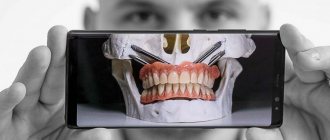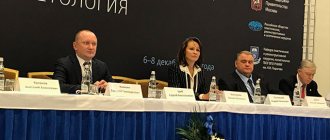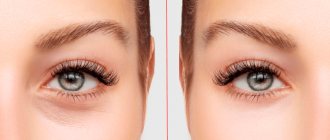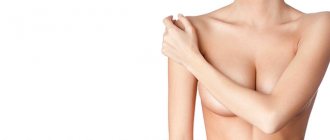Stretch marks (striae) are areas inside the skin where elastin fibers have ruptured. They not only look rather unaesthetic, but also prevent the skin in this area from contracting normally. There is no use in applying cream to stretch marks. The maximum that will happen is to moisturize the skin and reduce redness.
There is a solution - this is a procedure for laser resurfacing of stretch marks. It lasts less than an hour and is repeated once a month. The effectiveness of the procedure has already been appreciated by many women and men.
What is the procedure
Any laser exposure aims not to remove stretch marks, but to create conditions under which they are practically indistinguishable from the surrounding skin. This makes stretch marks less noticeable.
During the procedure, laser radiation damages and partially removes the surface layer of the skin - the epidermis. The effect also goes to the deeper layers of the dermis. Traumatization and warming stimulate new reparative processes in the skin, while the number of collagen and elastic fibers in all layers increases. As a result, the striae are “updated” and do not contrast so much with the rest of the background. It is necessary to understand that stretch marks, no matter how they appear, are directly a rupture of the upper layers of the skin. That is why it is impossible to completely remove them.
Striae removal methods
In fact, stretch marks are scar tissue, so they can be corrected using hardware techniques (fractional thermolysis, non-injection mesotherapy and laser) or surgically.
But if the stretch marks are shallow, then sometimes it is possible to “disguise” them with cosmetic procedures: peelings, wraps, injection techniques. Hardware techniques
- Laser resurfacing is the “evaporation” of the upper, damaged layer of skin with its subsequent restoration without a defect.
- Fractional thermolysis is a targeted removal of skin cells to activate and renew them.
- Non-injection mesotherapy is the introduction of medications that affect scar tissue using special devices - ultrasound, oxygen jets or electric current.
Peels
To correct stretch marks, both chemical peels and mechanical effects on the skin are used.
- The composition of the chemical peel is selected by the doctor based on the severity of the stretch marks. Medium and deep peels based on lactic, salicylic, phenolic and trichloroacetic acids are usually used.
- Diamond microdermabrasion (mechanical grinding) removes the top layer of damaged skin, smoothing out the relief of stretch marks.
Injection techniques
The introduction of therapeutic cocktail solutions into the deep layers of the skin triggers collagen synthesis, thereby increasing the elasticity and turgor of the skin. Targeted penetration of active substances into the affected area of skin tissue contributes to a long-lasting therapeutic effect.
- Mesotherapy: medicinal solutions are injected subcutaneously to a depth of 1-4 mm; promote the destruction of old stretched collagen fibers and stimulate the formation of new ones.
- Ozone therapy: the use of the healing properties of oxygen, which is capable of delivering therapeutic substances to the cells of the deep layers of the skin.
Cosmetic procedures
They are usually used as a complex combination of several care techniques to effectively moisturize and smooth the skin. For example, a good result when correcting shallow and fresh stretch marks
provides a simultaneous course of algae wraps with therapeutic massage and moisturizing masks.
Surgical removal
We are talking about abdominoplasty. It is carried out, of course, not to correct stretch marks, but to eliminate excess skin in the abdominal area, but this certainly solves the problem of stretch marks.
Types of devices and their effects on the body
Laser treatment is one of the most effective and safest methods for removing stretch marks. For these purposes, radiation is used on a different basis.
Solid State Lasers
These include neodymium, erbium and other types.
They are used for fresh stretch marks, and are usually purple or bluish in color. Pulsed radiation penetrates the surface layers of the skin and destroys capillaries there - the smallest vessels. After several sessions, such stretch marks become pale and indistinguishable in relation to the surrounding tissues.
As a rule, there are no consequences after this procedure. The only change is that the color of the skin and scar often takes on a purple tint. However, this is a temporary phenomenon and goes away after a week or two without leaving a trace.
The pulsed laser is also effective in combating various small vascular dilations, even in the facial area. The only limitation is that there should be no pathologically altered veins at the site of its use.
It is ideal to use a pulsed laser also in the chest area. It will not leave a mark on soft and delicate skin, but will eliminate the manifestations of stretch marks.
Gas lasers
They work on the basis of carbon dioxide. Their action is due to the absorption of these waves by the liquid component of the tissues. These are one of the first lasers used in cosmetology and medicine. Often used in salons for classic or full grinding. One of the not entirely pleasant consequences of the procedure is that a dry crust remains on the body for several days, which cannot be removed; it will fall off on its own.
Liquid lasers
Also the second name is excimer.
This type of radiation has found its main application in the treatment of psoriasis and vitiligo, helping to minimize the manifestations of these diseases. But it is also suitable for stretch marks.
An excimer laser can influence the production of melanin, the pigment that determines skin color. Based on this, it is possible to bring stretch marks to such a state that they will be practically indistinguishable from the surrounding areas.
Fractional laser
This type of radiation is considered the most effective against all kinds of stretch marks, including after childbirth. It can be used on a different basis and the impact occurs at a certain depth and in a specific area - this is the advantage of this method. Fractional lasers have been used for cosmetic purposes not so long ago - about 10 years.
The most significant difference from other procedures is that the effect occurs on the lower layers of the epidermis, which allows you to consolidate the result for a long time. Also, when using a fractional laser, collagen formation processes are stimulated. This protein provides firmness and elasticity to the skin. It is thanks to this effect that the surface of the skin between the stretch marks and the unchanged part is leveled. Also, during the procedures, stretch marks change their color - they become paler and less noticeable.
The undoubted advantage of fractional laser is that it simultaneously has a tightening effect, rejuvenating areas of the skin. This property is especially often used in facial cosmetology. The effect of fractional laser is directly proportional to the number of procedures performed. As a result, the total cost for it is quite high.
Injections into stretch marks: plastic surgery
The essence of this type of plastic surgery for stretch marks is to administer special medications to the area affected by stretch marks that fill the “empty” space. Externally, the effect of this procedure is manifested by smoothing the skin. However, firstly, to achieve the maximum effect from injection filling, you need to complete a course of 10 procedures, and, secondly, in this way you can even out only the skin, but not differences in its color. To “smooth out” them, you will need laser resurfacing, which also involves a course of several visits to a plastic surgeon.
But unlike abdominoplasty and mastopexy of stretch marks, injection-type plastic surgery does not involve any intervention, and, therefore, no anesthesia, a minimum of contraindications, no stitches and no long-term rehabilitation - the patient does not even need to stay in the hospital after such a procedure. The only thing is that in this way it will still not be possible to completely get rid of stretch marks - they, of course, will be camouflaged as much as possible, but, unfortunately, they will not disappear completely.
Indications for use
The formation of stretch marks is an individual process. For some, they appear on the mammary glands, thighs, and abdomen. And others have only a couple of barely noticeable stripes. During pregnancy, stretch marks are formed as a result of a mismatch in the growth rate of the abdomen and the division of skin cells. They are not immediately noticeable. But after the birth of the baby, and especially when the kilograms gained during pregnancy go away, they clearly begin to appear on the skin. Laser cosmetic procedures are indicated for various types of scars. This includes:
- Stretch marks on the chest, thighs, buttocks and abdomen after pregnancy. These can be either new formations or old ones.
- Striae of another origin, for example, during hormonal treatment, when using anabolic drugs and other cases.
- Scars on different parts of the body, including keloids.
- Age-related atrophic changes in the skin.
Removing stretch marks using cosmetic procedures
Cosmetic treatments can help relieve and reduce shallow stretch marks. They can be combined with each other for better results. Such procedures include: shower, massage, wraps, use of oils. The most common cosmetic procedures:
- Use of masks and creams. Such creams contain collagen, hyaluronic acid, elastin, but when using creams alone, results are difficult to achieve, since they are not able to penetrate deep into the layers of the skin.
- Algae wraps. Seaweed contains amino acids that help make stretch marks less noticeable. To obtain results, sessions are required a large number of times.
Cosmetic procedures are only an aid against stretch marks, so they should be carried out in combination with other procedures.
When can it be done after childbirth?
Women who rapidly gain weight during pregnancy, when carrying twins or triplets, as well as with a hereditary predisposition to such skin changes are at greater risk of developing stretch marks. You can remove stretch marks after childbirth with a laser at different times, but only after the baby is born.
It is believed that fresh stretch marks can be dealt with more efficiently and quickly than with old ones. However, there are some nuances after childbirth. Firstly, if a woman expects to lose a couple of extra pounds gained during pregnancy, then all such laser procedures should be attributed to a period of already stable weight. The effect, of course, can be obtained at any body weight. But the fact is that after losing more kilograms, the stretch marks will again become larger than immediately after the procedure. But if the stretch marks are very pronounced, it is better to start laser removal of them as early as possible.
How to remove stretch marks: laser surgery for stretch marks and prevention
Stretch marks are very common and cannot always be prevented. However, the following tips may help reduce the risk of developing stretch marks.
- Healthy weight. Gaining weight quickly over a short period of time is one of the most common causes of stretch marks.
- Diet. Due to a sharp jump in weight, both upward and downward, stretch marks can occur. If you need to lose weight, then lose weight slowly. You should not lose more than 0.5 kg per week. A balanced diet will provide all the vitamins and minerals the body needs. Dietary supplements are not needed to prevent stretch marks from developing.
- Stretch marks that appear during pregnancy are usually due to hormonal changes that affect the skin. Stabilizing your weight during pregnancy minimizes the possibility of stretch marks.
Contraindications
Despite all the apparent safety of the laser stretch mark removal procedure, there are contraindications to it.
As a result of any of the techniques, all layers of the skin, as well as nearby structures, are heated. Therefore, if you have any diseases of the skin, blood, blood vessels or other chronic pathologies, you should consult a doctor before performing the procedure. Particular caution should be exercised in the presence of the following conditions:
- Non-infectious skin pathology, especially in areas of stretch marks. These are psoriasis, eczema, lichen, neurodermatitis, allergic reactions and the like.
- Any inflammatory pathology in the acute stage.
- Laser stretch mark removal should not be performed during pregnancy. If they cause significant discomfort, it is better to give preference to various creams and lotions at this time.
- Varicose veins in areas of stretch marks are an absolute contraindication. First, you should remove the affected veins, and then deal with stretch marks.
- Additional consultation with a doctor is necessary if there are significant congenital pigmentations of the skin or if it is damaged by viruses.
- Various blood diseases, especially those with impaired clotting ability.
Removing stretch marks with peelings
To correct shallow stretch marks localized in a small area, peeling is used, which has several types:
- Chemical. Used for deeper stretch marks using hydroacids.
- Diamond. Peeling consists of grinding in combination with massage of the upper layer of skin, after which the surface of the scar tissue is leveled.
Peeling is effective only with regular visits, like other types of stretch mark removal, it has contraindications.
Methodology
Laser stretch mark removal
The duration of laser stretch mark removal depends on the type and number of stretch marks. On average it takes about 30 - 40 minutes.
To carry out the procedure, the woman lies down on the couch, exposing the part of the body necessary for the procedure. Next, the specialist uses the device to influence the skin. Local anesthesia is often performed before the procedure, depending on the patient's wishes and conditions.
The procedure itself is often accompanied by a tingling sensation, some report pain. After the procedure, slight swelling and redness may persist at the site for several more days. But after a couple of days you can already observe a significant improvement in your skin condition.
One session, of course, is not enough to obtain a significant effect. Typically a course is required. Moreover, for many techniques, the more noticeable the result, the more times the grinding was performed. The minimum number of procedures is 5 - 7. It is recommended to repeat the course after 4 - 6 weeks or on an individual basis: the more significant the intervention, the more time it will take to recover.
Tips for treating stretch marks
No one can determine the exact time of the appearance of stretch marks, so you should always be thoughtful about your health, including your skin. By following a few simple tips, you can protect yourself from the appearance of stretch marks or simplify the process of treating them.
Tip #1 – prevention
In order to avoid skin damage (stretch marks are specifically damage), you need to take care of its condition, care for it, moisturize and nourish it in a timely manner, rationally distribute physical activity and handle hormonal medications with caution. In addition, nutrition plays a significant role in the condition of the skin - it must be complete and balanced. Water treatments and massage also have a positive effect on the appearance of the skin and help keep it toned.
Tip No. 2 – timely contact a specialist
You should always remember that new stretch marks are much easier to treat than old ones. In addition, much less time and effort is spent on “young” stretch marks. The method and duration of elimination of stretch marks can only be determined by an experienced specialist. Only a specialist (doctor or cosmetologist) will select an adequate program, depending on individual characteristics: the severity of stretch marks, their location and size, and will also describe the possible results and the rehabilitation period after carrying out the recommended techniques. In turn, he will pay attention to associated defects that can be eliminated simultaneously with stretch marks.
Getting rid of stretch marks is a process that requires not just a systematic approach, but also significant patience and faith, desire and desire, not to mention financial costs. The main thing to remember is that a positive result will be visible if maximum efforts are made to it. For many people, getting rid of stretch marks is a significant transformation in appearance, which generates confidence in their own beauty.
Side effects
If you are wondering whether it is possible to remove stretch marks after childbirth with a laser, you should immediately become familiar with all the possible consequences of the procedure. These include:
- The pain experienced by some women is quite intense. Of course, first of all it depends on individual sensitivity, as well as on the technique used. The main thing in such cases is to choose the right anesthesia.
- After laser correction of stretch marks, minor swelling and redness in the areas where the procedure was performed may be bothersome for several days. As a rule, no more than a day or two.
- For a certain period of time you will have to limit yourself to certain procedures. For example, prolonged exposure to the sun or solarium for up to 4 to 6 months is undesirable. The duration is determined by the cosmetologist.
- Use extreme caution when using other substances that affect the skin. It is necessary to stop peeling, using scrubs, etc. for a while.
- It is not advisable to swim in open bodies of water for several weeks - flora that is harmless under normal conditions can cause inflammatory changes in laser-damaged skin.
We recommend reading the article about all the ways to remove stretch marks after childbirth. From it you will learn about the mechanism of the problem, the most effective methods of dealing with stretch marks, surgical correction, as well as recommendations for prevention.










